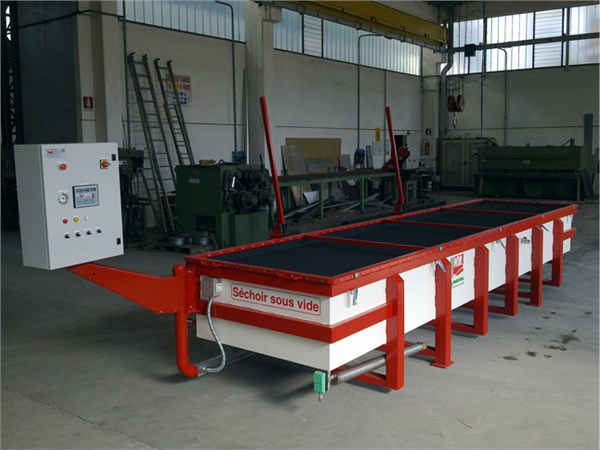The heat treatment of wood, or heat treatment, is the process that allows the physical properties of the material to be modified, acting on the humidity and on the aesthetics of the finished product. The main advantage that can be obtained with wood heat treatment is that of making it a material that is not appreciated by woody fungi and insects, which are responsible for the main stability and durability problems of the manufactured articles. In fact, these are attracted by the water, oxygen and sugars present in each board. When we manage to eliminate even just one of these three elements, we eliminate the risk that the structure could be affected by parasites.
To do this, we have two methods available:
- chemical substances, such as boron salts, creosote or copper sulphates, which poison sugars but are also toxic to humans
- thermo treatment, which acts by modifying the levels of water, and therefore humidity, in an absolutely natural way
What are the advantages of wood thermo treatment?
As we have already seen, heat-treated wood is the protagonist of artifacts destined to remain stable over time, because they cannot be attacked by parasites. However, this is not the only advantage it offers.
In fact, the heat-treated material, in addition to increasing durability and stability, is light, resin-free, pleasant to the touch, with a very low probability of deformation or twisting, aesthetically perfect in its splendid dark shade, and totally free of chemical substances.
How is vacuum heat treatment of wood carried out?
The process takes place inside bivalent cells, in which the stacks to be subjected to drying and treatment at high temperatures are inserted. The wooden material is first dried and the humidity level inside the wood drops to almost zero, then subjected to temperatures between 190°C and 210°C (depending on whether you want to obtain a product intended for the production of interior furnishings or intended for outdoor environments).
At these temperatures the wood undergoes a chemical change and the sugars present in the cells change and stabilize the shape of the cell itself. Once the desired level has been reached, the temperature is kept constant for 2/3 hours before proceeding with cooling. In this phase the high heat could generate fires and it is for this reason that the chambers in which the treatment is carried out at high temperatures involve vacuum processes, i.e. in the absence of oxygen.
The last phase of the heat treatment involves cooling and, depending on the wood species treated, the restoration of humidity. Thanks to a system that does not use water, the temperature is lowered to 80/90°C and the percentage of humidity it needs for use is returned to the wood via steam, i.e. around 8%. This minimum presence of humidity will serve to make it easier to work later.
WDE Maspell heat treatment systems ensure perfect processing methods for wood of any thickness, even for the most complex cases, for slats, planks and semi-finished products.









![Anso FG Reviews: UPDATED 2024 [ansofg.com] Anso FG Reviews UPDATED 2024 [ansofg.com]](/wp-content/uploads/2023/12/Anso-FG-Reviews-UPDATED-2024-ansofg.com_-100x70.png)








